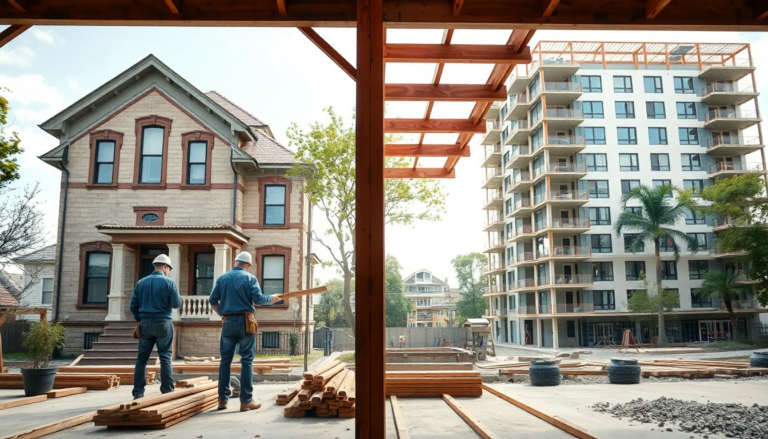Argomenti trattati
When faced with the dilemma of whether to renovate an existing home or embark on a new construction project, the decision can feel overwhelming. It’s not just about aesthetics; it’s about money, time, and the emotional investment that comes with transforming a space. So, how do you navigate this complex choice? Let’s dive into the details.
Understanding the costs involved
The first thing to consider is your budget. Full-scale renovations can sometimes seem like a more palatable option than starting from scratch, but the costs can quickly spiral. For example, if you’re looking at renovating a typical 2,000-square-foot home, you could be spending between $30,000 and $300,000, depending on the scope and quality of finishes. On the other hand, building a new home in 2025 could set you back an average of $323,026, according to recent estimates. This stark contrast in figures can be eye-opening.
One of the biggest pitfalls of renovation projects is the tendency for unexpected issues to arise. Once you start tearing down walls or digging into the floors, you might uncover outdated plumbing or structural problems that need addressing. These surprises can lead to budget overruns, and before you know it, your cozy renovation project has turned into a financial headache. In contrast, new constructions, while they may have their own set of complications, often provide a clean slate with fewer surprises.
The permitting and approval process
Time is an essential factor in this decision as well. Generally, constructing a new home requires navigating a lengthy permitting and approval process, which can significantly delay the start of your project. Meanwhile, renovations can often be phased, allowing you to begin working on parts of the home sooner. However, it’s important to note that renovations can also take longer than expected due to complications that arise during the construction process.
Financing your project
Financing options are another crucial aspect to consider. Construction loans typically come with higher interest rates compared to traditional mortgages, which could make new builds less appealing for some homeowners. If you purchased your current home at lower interest rates, you might be more inclined to renovate rather than risk jumping to a higher rate by moving. This situation has led many to consider adding space to their existing homes, maximizing their investment without the burden of higher mortgage payments.
The charm of renovations
On the flip side, renovations allow you to retain and enhance the character of an older home. Many buyers appreciate the unique architectural details that come with vintage properties, features that new constructions often lack. However, this doesn’t mean renovations are without limitations. Elevation changes are difficult to implement, and additions can sometimes feel disconnected from the original structure, potentially detracting from the home’s overall aesthetic.
The benefits of new construction
New constructions often boast significant advantages, particularly in terms of energy efficiency and maintenance. Building to current codes can lead to lower insurance costs and a home that requires less immediate upkeep. However, just like renovations, there’s a risk of going over budget due to upgrades and changes you might want to include during the build process.
Final thoughts
Ultimately, the decision to renovate or build new will depend on your specific circumstances, preferences, and financial situation. Each option has its merits and drawbacks, and it’s essential to weigh these factors carefully. Engaging with a financial planner can provide valuable insights and help you determine the best approach for your needs. Whether you decide to embrace the charm of a renovation or the clean slate of new construction, the goal is to create a space that feels like home.

